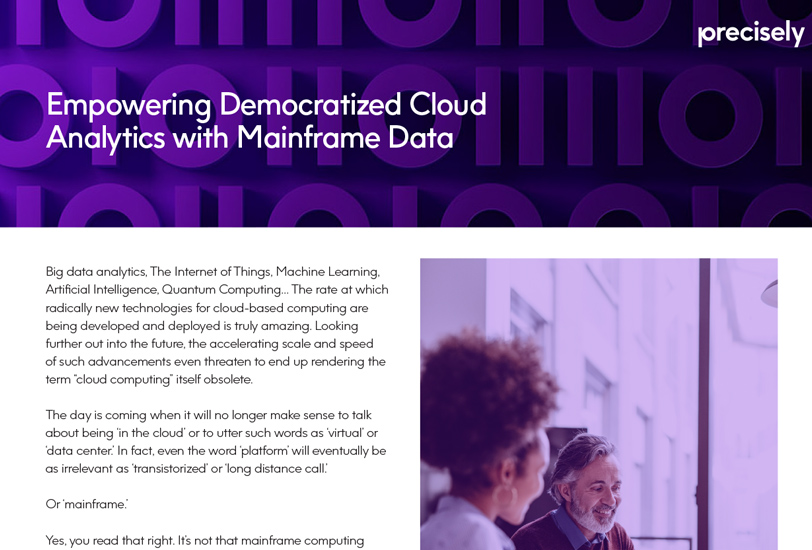White Paper
Empowering Democratized Cloud Analytics with Mainframe Data
Big data analytics, The Internet of Things, Machine Learning, Artificial Intelligence, Quantum Computing… The rate at which radically new technologies for cloud-based computing are being developed and deployed is truly amazing. Looking further out into the future, the accelerating scale and speed of such advancements even threaten to end up rendering the term “cloud computing” itself obsolete.
The day is coming when it will no longer make sense to talk about being ‘in the cloud’ or to utter such words as ‘virtual’ or ‘data center.’ In fact, even the word ‘platform’ will eventually be as irrelevant as ‘transistorized’ or ‘long distance call.’
Or ‘mainframe.’
Yes, you read that right. It’s not that mainframe computing systems are going away any time soon. In fact, mainframe platforms are just as essential today for running global, enterprise-scale businesses as they have ever been. And despite years of pundits advocating otherwise, actually migrating off mainframe and onto cloud platforms has very rarely proven to be worth the cost and business risk involved.
Instead, the path forward for mainframe computing is to become so seamlessly and completely enmeshed within the coming reality of globally distributed, AI enabled, qubit-based computing that it is essentially indistinguishable from any other form of information processing. The machines will still be out there, somewhere. They will just be invisible and irrelevant to the people accessing and analyzing the data.
But for today’s IT leaders tasked with moving enterprise IT operations forward to that fluidly integrated, hardware agnostic and uniformly democratized future, there is no avoiding the immutable mandate to keep the business running efficiently, even while making foundational, even radical changes to systems architectures. As always, they need to find the stepping-stones and bridges that will make the journey possible.
In this white paper you will find straightforward explanations of why new technologies and business trends are forcing IT leaders to open up mainframe data access; how the unique architecture of mainframe systems makes doing so very challenging; and practical advice on achieving the most important goals for integrating mainframe data into cloud environments.
